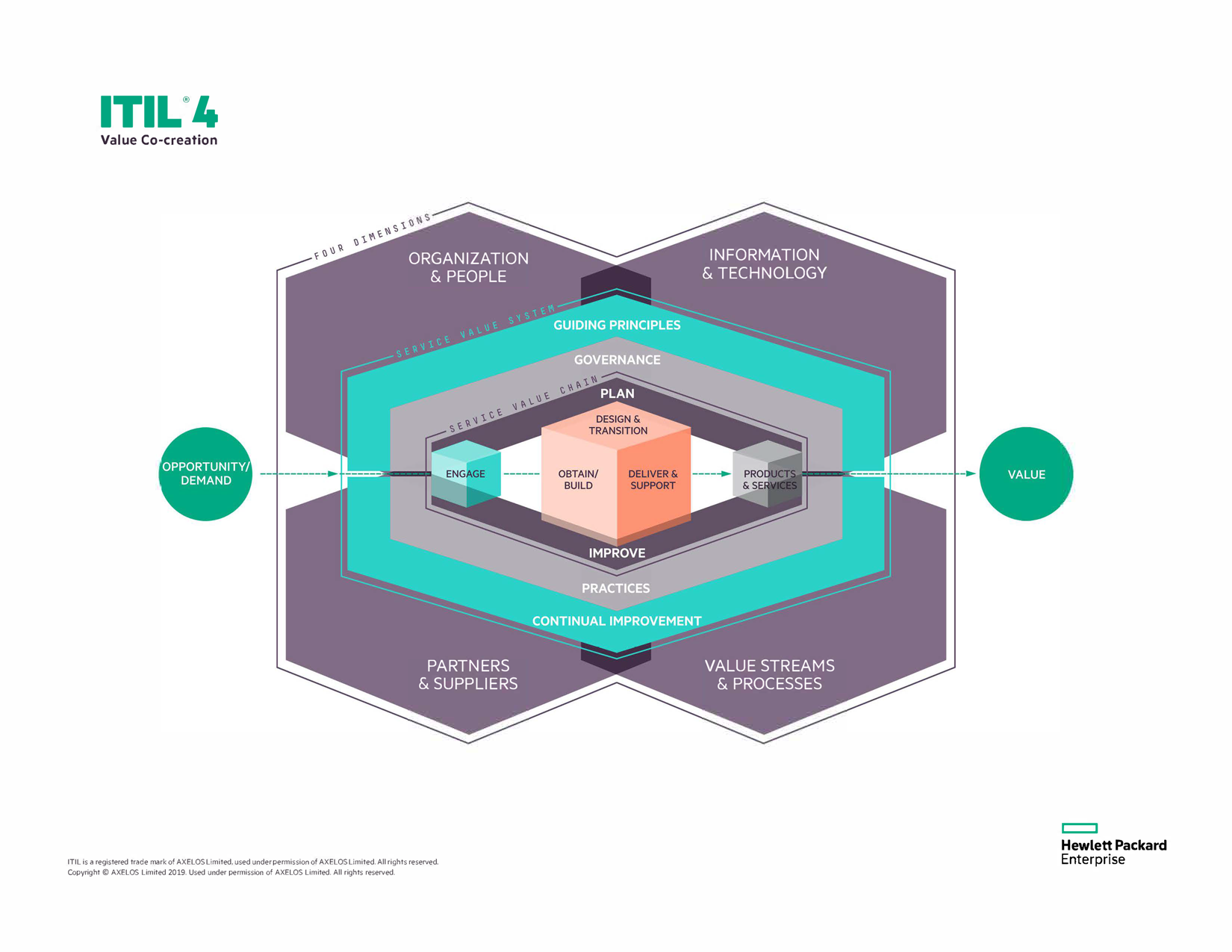For organizations trying to improve their management of IT, ITIL® best practice has been one of the major sources of guidance. Before ITIL 4, the last version of ITIL was released in 2011. Since then, many organizations have undergone transformational change both to their business models and to the types of technology they use. How well does ITIL 4 align itself to this evolved business and technology landscape?
Before we look at ITIL 4, let’s address some of the criticisms of ITIL V3 that may yield surprises. There have been many myths surrounding ITIL V3, such as the claim that it advocates a waterfall, ‘traditional’ approach to change, rather than an agile one. It doesn’t. Another claim is that certain processes ‘belong’ to a certain service lifecycle stage. They don’t. From the outset, the ITIL V3 authors made these two points very clear, but the messages were lost, or at least diluted. ITIL 4 addresses these challenging issues, as well as some of the criticisms related to ITIL’s relevance which naturally arose during the long period between publication releases. A huge improvement has been to develop ideas about ‘value’ and ‘value co-creation,’ continuing the theme of value provision in ITIL V3. At the heart of ITIL 4 is the service value system (SVS), a representation of ‘how the various components and activities of the organization work together to facilitate value creation through IT-enabled services’ (ITIL Foundation, ITIL 4 Edition, p.3). Within the SVS is a service value chain of activities (plan, improve, engage, design and transition, obtain/build, deliver and support) which can be invoked in any order and at any point in a value stream, which is a series of steps an organisation undertakes to create and deliver products and services to consumers (previously ‘customers’ and ‘users’ in ITIL V3). In this way, the design of ITIL 4 puts the emphasis firmly on value creation rather than on the means (service lifecycle stages or activities) to reaching that objective.

Another shift in emphasis is from processes to practices. The latter, which are positioned at a higher level in an operating model, can be combined with any of the value chain activities. However, some practices have closer associations with certain value chain activities and the closeness of the relationships between the two is expressed in a collection of ‘heat maps.’ Now, with the emphasis firmly on the value creation, we don’t need to be concerned with where practices sit in the framework, or at what point in the value stream they can be invoked, because the design gives complete flexibility according to the practical needs of the value stream objective.
Although I’ve mentioned ‘value creation,’ ITIL 4 favors the term ‘value co-creation.’ This new term reflects the idea that value is no longer seen as a mono-directional handover from a provider to a consumer, but as a collaborative effort to develop mutually-beneficial, interactive service relationships which bring benefits to all parties.
Interested to learn more about how HPE can help improve the business benefits of your hybrid cloud with service management? Inquire at HybridCloudServiceManagement@hpe.com
ITIL® is a registered trade mark of AXELOS Limited, used under permission of AXELOS Limited. All rights reserved.
Copyright© AXELOS Limited 2019. AXELOS®, the AXELOS swirl logo® and ITIL® are registered trade marks of AXELOS Limited. All rights reserved.




